Eye Allergy Treatment Market Type Insight
Based on type, the Eye Allergy Treatment Market has been segmented into seasonal and perennial allergic conjunctivitis, vernal keratoconjunctivitis, atopic keratoconjunctivitis, contact allergic conjunctivitis, and giant papillary conjunctivitis. The seasonal and perennial
allergic conjunctivitis
segment dominated the market in 2023, while the atopic keratoconjunctivitis segment is projected to be the fastest-growing segment during the forecast period, 2024-2032.
Seasonal allergic conjunctivitis (SAC) and perennial allergic conjunctivitis (PAC) are among the most common forms of eye allergies worldwide. They are triggered by allergens such as pollen, dust mites, and animal dander, affecting a large population during specific seasons or year-round. There are well-established treatment options for Seasonal allergic conjunctivitis (SAC) and perennial allergic conjunctivitis (PAC), including antihistamine eye drops, mast cell stabilizers, corticosteroids, and combination therapies. These treatments effectively alleviate symptoms and manage allergic reactions, contributing to the segment's market dominance.
Figure 2: EYE ALLERGY TREATMENT MARKET SIZE, BY TYPE, 2023 & 2032 (USD Billion)
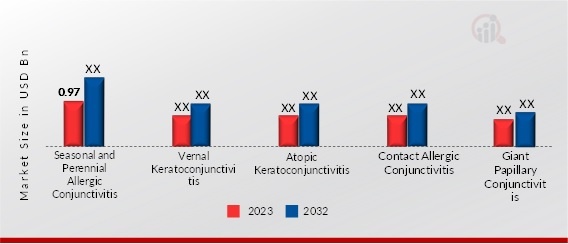
Source: Secondary Research, Primary Research,
Market Research Future Database, and Analyst Review
Eye Allergy Treatment Market Drug Class Insights
Based on drug class, the Eye Allergy Treatment Market is segmented into antihistamine, mast cell stabilizer, NSAIDS, corticosteroid, decongestants, immunotherapy allergy shots, and others. The antihistamine segment dominated the market in 2023, while the immunotherapy allergy shots segment is projected to be the fastest-growing segment during the forecast period, 2024-2032.
Antihistamines
are widely recognized for their ability to block histamine receptors, which are responsible for allergic reactions such as itching, redness, and swelling of the eyes. They provide rapid relief from allergy symptoms. Patients often prefer antihistamines due to their established efficacy, rapid onset of action, and minimal systemic side effects compared to other drug classes. Antihistamines have been fundamental in allergy treatment for many years, with extensive clinical research supporting their efficacy and safety. This strong foundation of evidence built a confidence in healthcare providers and patients alike, contributing to their ongoing dominance in eye allergy treatment market.
Eye Allergy Treatment Market, by Treatment Form Insights
Based on treatment form, the Eye Allergy Treatment Market is segmented into eyedrops, injectables, and tablets & capsules. The eyedrops segment dominated the market in 2023, while the injectables segment is projected to be the fastest-growing segment during the forecast period, 2024-2032.
Eyedrops are specifically formulated for direct application to the eyes, allowing for targeted delivery of medications to relieve symptoms such as itching, redness, and irritation associated with eye allergies. This direct application provides rapid relief and is convenient for patients. They are generally easy to administer and can be used multiple times a day as needed. Patients appreciate the simplicity and non-invasive nature of eyedrop treatments compared to injectables or oral medications. Many eyedrop formulations for mild to moderate eye allergies are available over the counter (OTC), making them easily accessible without requiring a prescription.
This accessibility contributes to their widespread use and market dominance.
Eye Allergy Treatment Market Distribution Channel Insights
Based on distribution channel, the Eye Allergy Treatment Market is segmented into hospital pharmacies, online pharmacy, and retail pharmacy. The hospital pharmacies segment dominated the market in 2023, while the retail pharmacy segment is projected to be the fastest-growing segment during the forecast period, 2024–2032.
Hospital pharmacies ensure immediate access to a wide range of medications required for treating severe or acute eye allergies. This includes injectables, specialized eye drops, and medications that may not be readily available in retail pharmacies or online. For patients experiencing severe allergic reactions affecting the eyes, hospital pharmacies offer emergency care and critical support. Therefore, Hospital pharmacies play a pivotal role in the eye allergy treatment market due to their capacity to deliver specialized care, prompt access to medications, emergency readiness, strict adherence to regulatory standards, and seamless integration into healthcare systems.
These elements combine to establish their dominance in effectively managing and treating diverse types of eye allergies.
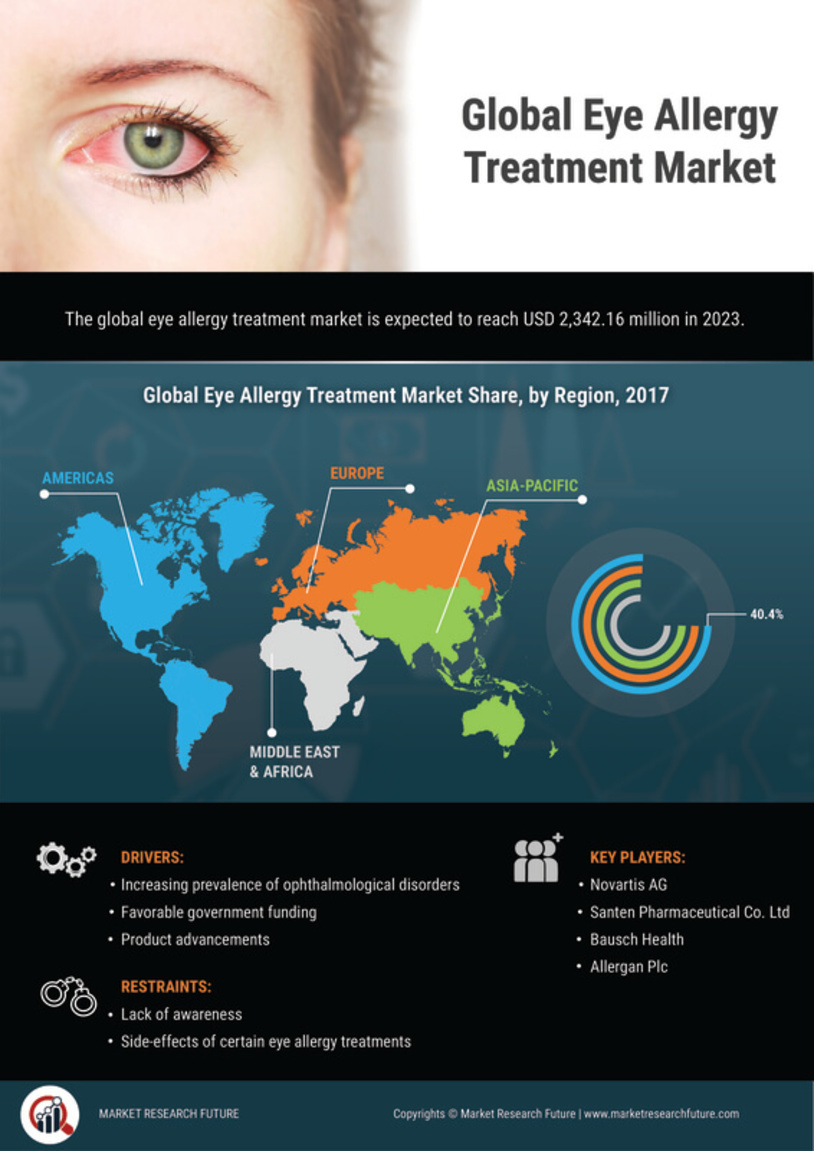


 Source: Secondary Research, Primary Research, Market Research Future Database, and Analyst Review
Source: Secondary Research, Primary Research, Market Research Future Database, and Analyst Review
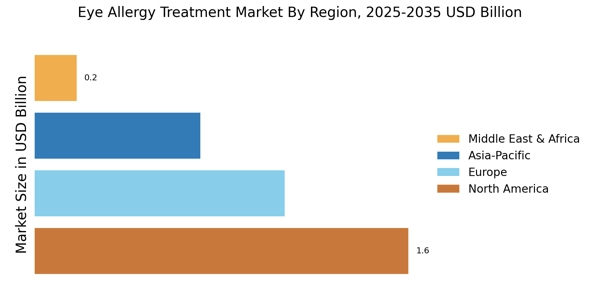
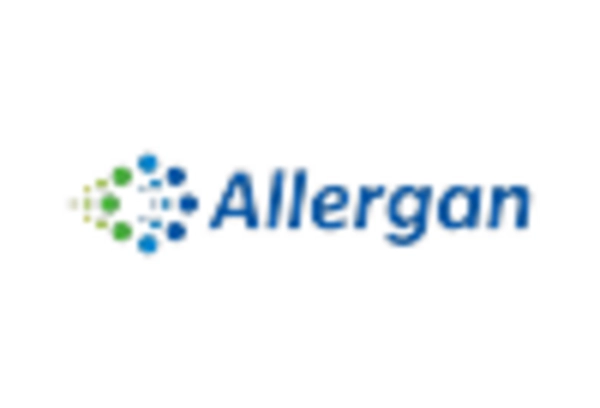
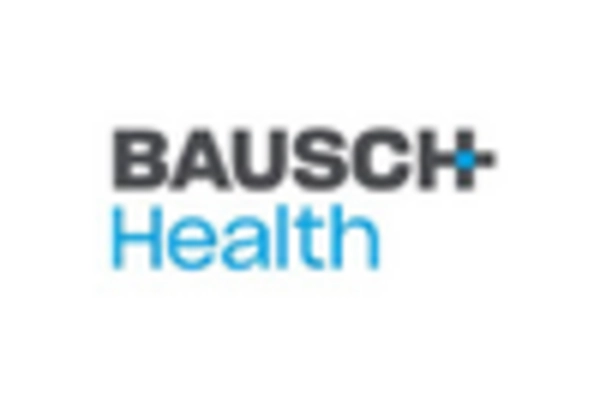


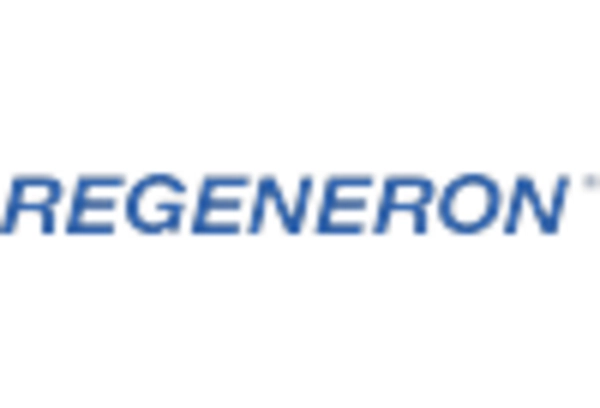
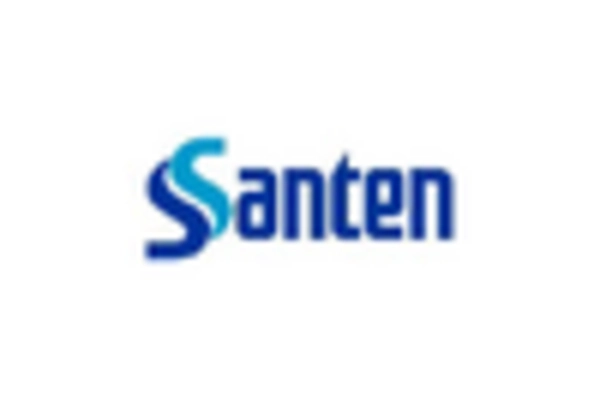








Leave a Comment